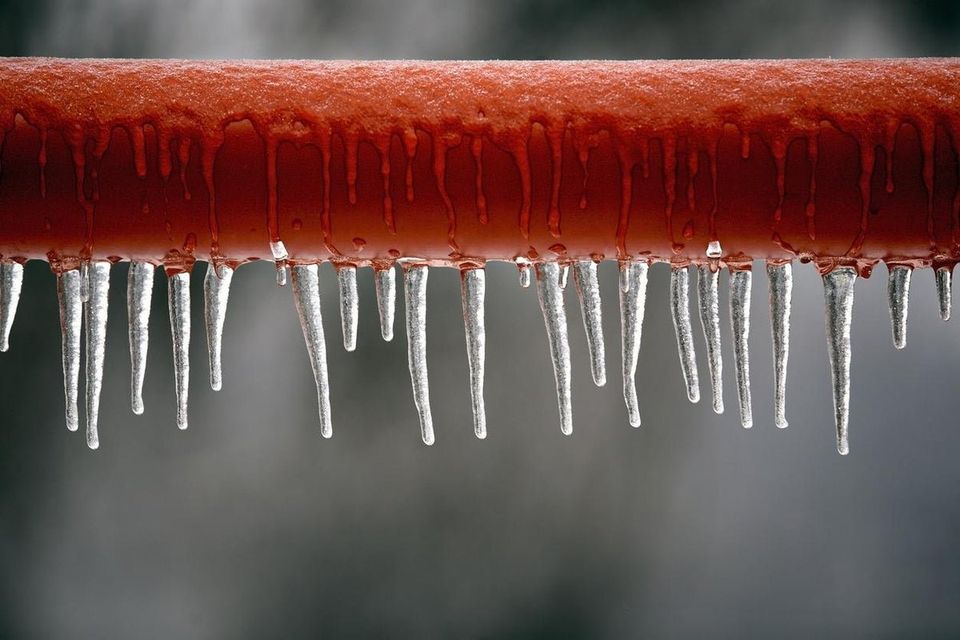Crucial Tips for Preventing Frozen Plumbing in Winter Conditions
Crucial Tips for Preventing Frozen Plumbing in Winter Conditions
Blog Article
Were you interested in critical information on Winter Plumbing Precautions: Preventing Frozen Pipes?

Cold weather can wreak havoc on your pipes, especially by freezing pipes. Below's exactly how to stop it from occurring and what to do if it does.
Introduction
As temperature levels drop, the risk of frozen pipelines boosts, possibly causing pricey fixings and water damage. Understanding just how to prevent frozen pipes is vital for house owners in chilly environments.
Recognizing Frozen Pipelines
What creates pipelines to freeze?
Pipelines freeze when revealed to temperatures listed below 32 ° F (0 ° C) for extended durations. As water inside the pipes freezes, it expands, taxing the pipeline walls and potentially creating them to burst.
Dangers and problems
Frozen pipes can lead to water supply interruptions, residential property damages, and pricey repair services. Burst pipes can flood homes and cause extensive architectural damages.
Indications of Frozen Pipes
Determining frozen pipelines early can avoid them from bursting.
Just how to determine icy pipes
Search for lowered water flow from taps, unusual odors or sounds from pipes, and noticeable frost on subjected pipelines.
Prevention Tips
Shielding susceptible pipelines
Wrap pipes in insulation sleeves or utilize warmth tape to safeguard them from freezing temperature levels. Focus on pipes in unheated or outside locations of the home.
Heating methods
Keep interior areas sufficiently warmed, specifically areas with plumbing. Open cabinet doors to enable warm air to circulate around pipes under sinks.
Safeguarding Outside Plumbing
Garden hose pipes and outdoor faucets
Disconnect and drain yard tubes before winter season. Set up frost-proof spigots or cover exterior faucets with shielded caps.
What to Do If Your Pipes Freeze
Immediate actions to take
If you presume icy pipes, keep taps open to soothe stress as the ice thaws. Use a hairdryer or towels soaked in hot water to thaw pipes slowly.
Long-Term Solutions
Structural changes
Consider rerouting pipes away from outside walls or unheated areas. Include added insulation to attic rooms, basements, and crawl spaces.
Upgrading insulation
Purchase high-quality insulation for pipes, attic rooms, and wall surfaces. Proper insulation helps maintain consistent temperatures and decreases the threat of frozen pipes.
Final thought
Protecting against icy pipes requires positive procedures and fast responses. By understanding the causes, indications, and safety nets, house owners can safeguard their plumbing during cold weather.
6 Proven Ways to Prevent Frozen Pipes and Protect Your Home
Disconnect and Drain Garden Hoses
Before winter arrives, start by disconnecting your garden hoses and draining any remaining water. Close the shut-off valves that supply outdoor hose bibs and leave the outdoor faucet open to allow any residual water to drain. For extra protection, consider using faucet covers throughout the colder months. It’s also important to drain water from any sprinkler supply lines following the manufacturer’s directions.
Insulate Exposed Pipes
Insulating your pipes is an effective way to prevent freezing. Pipe insulation is readily available at home improvement stores and is relatively inexpensive. Pay close attention to pipes in unheated areas such as the attic, basement, crawl spaces, or garage. Apply foam insulation generously to create a buffer against the cold. You can also wrap your pipes in heat tape or thermostat-controlled heat cables for added warmth.
Seal Air Leaks
Inspect your home for any cracks or openings that could let in cold air. Seal any holes around the piping in interior or exterior walls, as well as the sill plates where your home rests on its foundation. Additionally, make sure to keep your garage door closed unless you’re entering or exiting. Leaving it open creates a significant air leak that can lead to frozen pipes.
Allow Warm Air Circulation
During cold snaps, it’s essential to allow warm air to circulate evenly throughout your home. Leave interior doors ajar to promote better airflow. Open kitchen and bathroom cabinets to help distribute heat consistently around the rooms. If you have small children or pets, be sure to remove any household chemicals or potentially harmful cleaners from open cabinets for safety.
Let Faucets Drip
A small trickle of water can make a big difference in preventing ice formation inside your pipes. When temperatures drop significantly, start a drip of water from all faucets served by exposed pipes. This continuous flow helps prevent the water from freezing. Additionally, running a few faucets slightly can relieve pressure inside the pipes, reducing the chances of a rupture if the water inside does freeze.
https://choateshvac.com/6-proven-ways-to-prevent-frozen-pipes-and-protect-your-home/

I'm very drawn to Prevent Frozen Pipes and I am praying you enjoyed reading the entry. Those who liked our page kindly do not forget to share it. Thank-you for your time spent reading it.
Schedule Today! Report this page